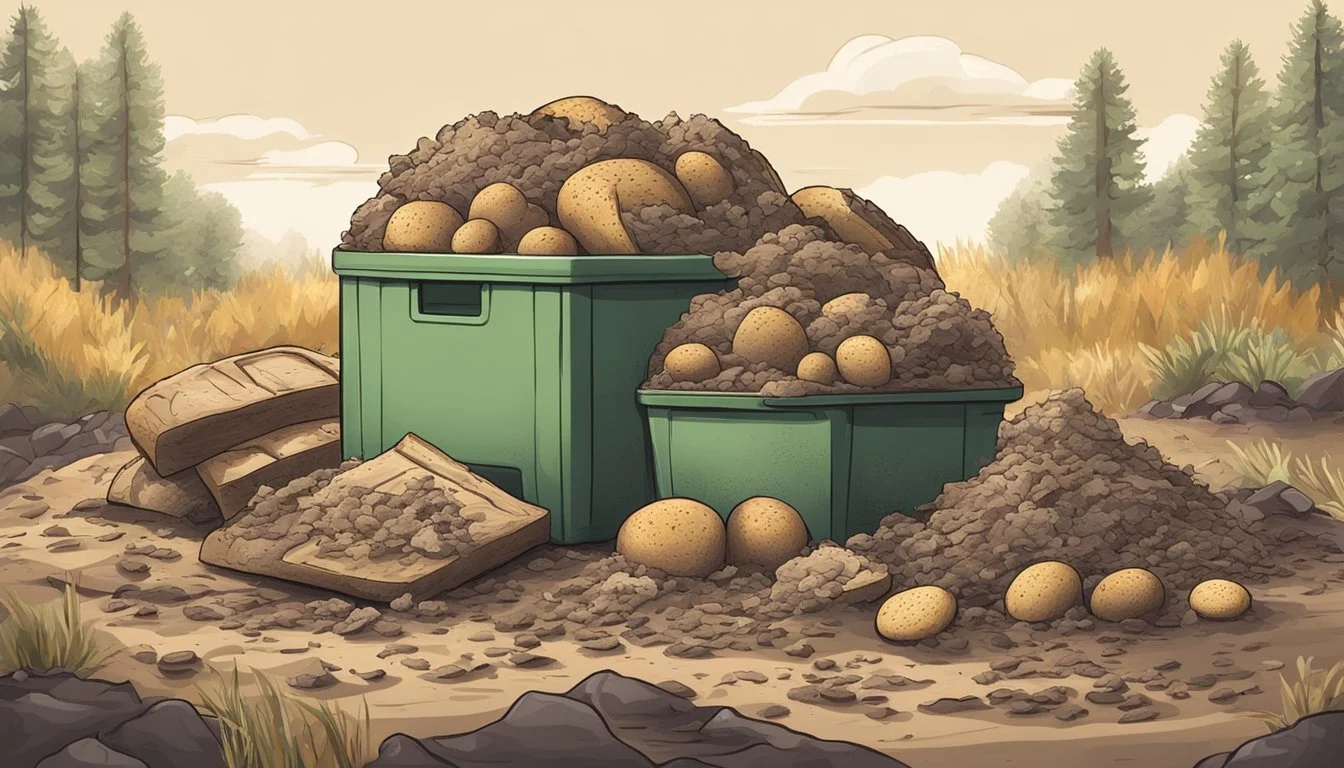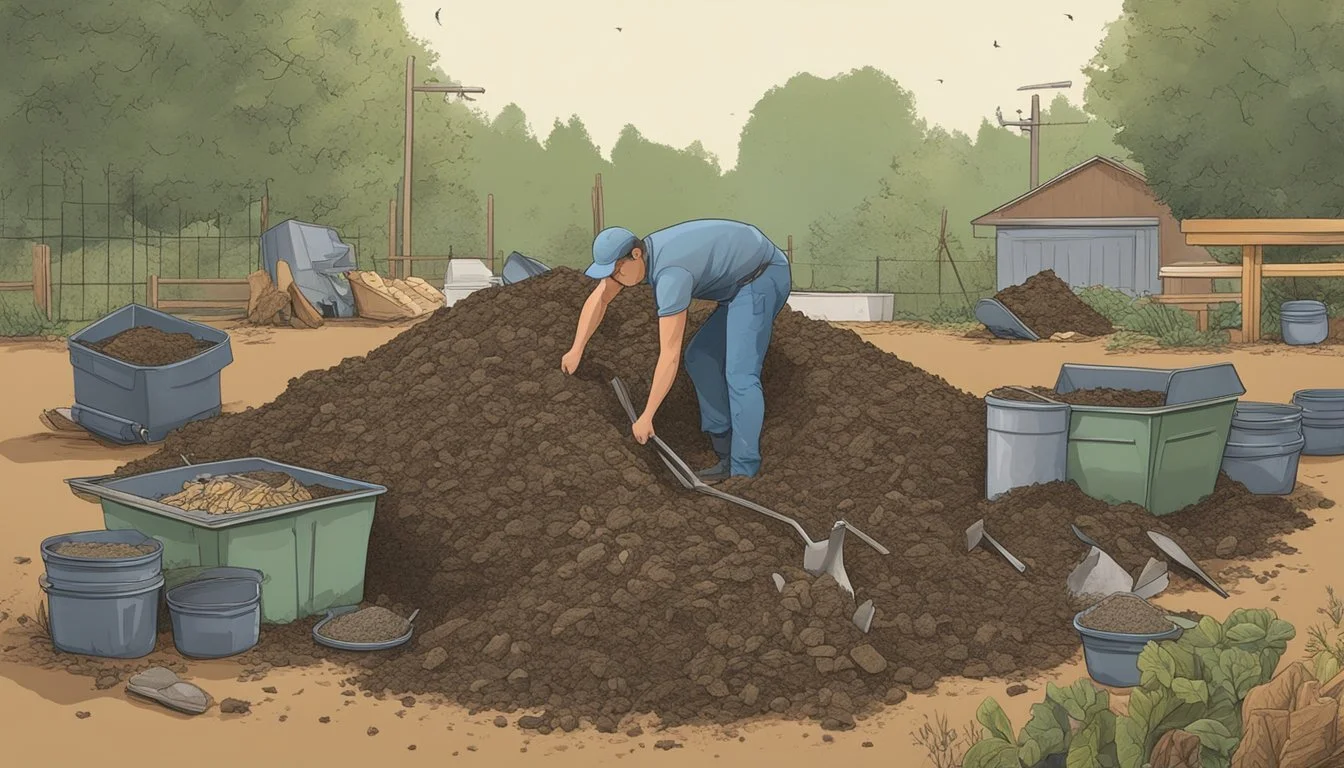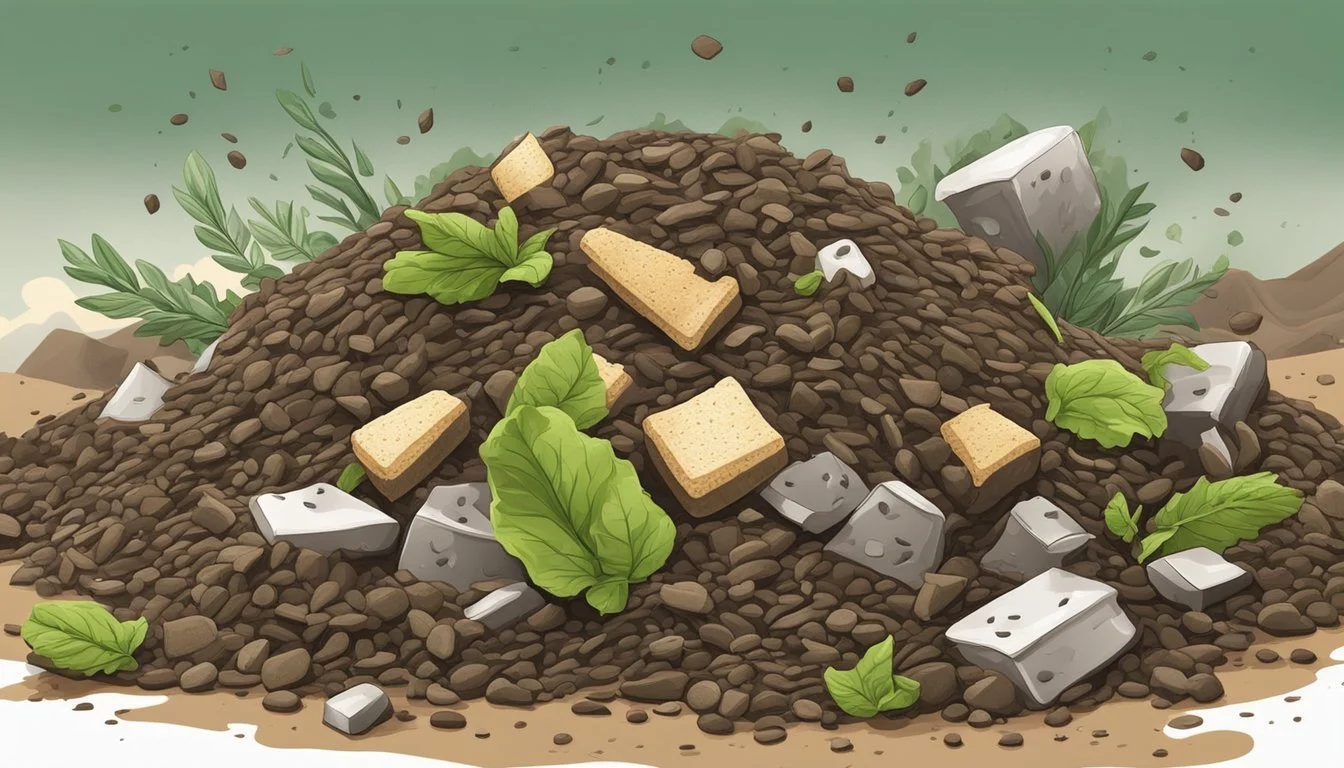Can You Compost Bread Molds?
Understanding the Effects on Your Compost Bin
Composting is an effective method of recycling organic waste into nutrient-rich soil amendments, and understanding what materials are suitable for this process is crucial for both efficiency and environmental health. Bread (What wine goes well with bread?), as a commonly discarded food item, can be a subject of debate among composting enthusiasts. While it is organic and will decompose, there are some considerations to bear in mind. The composting of moldy bread, for example, is feasible as mold is a natural part of the decomposition process and can introduce beneficial organisms to the compost pile.
However, the introduction of bread, particularly moldy bread, to a compost bin requires careful management to avoid potential problems. The decomposition of bread occurs due to the activity of microorganisms, which break down the bread into its constituent parts, providing a source of nutrients to the soil. The presence of mold indicates that the decomposition process has already begun, which can be advantageous for the composting process.
Despite its compostability, bread, especially when moldy, can attract unwanted pests such as rodents and insects if not properly managed in the compost bin. It is important to ensure that the compost bin is well-maintained and secure to prevent any issues. By taking appropriate precautions, such as covering the compost adequately and introducing bread in small amounts, it can be safely incorporated into the composting system without hindering the overall process.
Basics of Composting
In the realm of waste management and soil health, composting is an essential practice that converts organic waste into a valuable resource for gardens and landscapes. It involves a specific decomposition process that enriches the soil and aids in growing robust plants.
What is Composting?
Composting is the method by which nature recycles decomposed organic materials. Organic matter, such as leaves, vegetable scraps, and even bread molds, is broken down by microorganisms, insects, and fungi. They work in concert to transform waste into nutrient-rich compost. This composting process takes place in a compost bin or compost pile, settings where control over environmental conditions accelerates decomposition. Within a composting environment, a balance of carbon-rich materials, known as "browns," and nitrogen-rich materials, or "greens," is necessary to foster optimal conditions for the microorganisms.
Benefits of Composting
Improves Soil Quality: Composting generates humus that enhances soil structure, retaining moisture and improving the soil's capacity to nurture plant life.
Nutrient-Rich Soil Amendment: Compost is laden with nutrients essential for garden health, supplying plants with a sustainable source of nourishment.
Reduces Waste: By diverting organic waste from landfills to compost piles, composting reduces the volume of waste significantly.
Supports Healthy Soil Ecosystem: The addition of compost introduces beneficial organisms to the soil, bolstering its health and resilience against diseases.
Sustainable Practice: Composting recycles kitchen and yard waste, closing the nutrient loop and reducing the need for chemical fertilizers, thereby promoting a more sustainable approach to gardening.
What Can Be Composted?
In the realm of composting, a balance between green and brown materials is essential. Green materials offer nitrogen, while brown materials contribute carbon, which together facilitate the decomposition process.
Compostable Materials
Compostable materials are varied and include both green and brown matter. Green materials are rich in nitrogen and include items like:
Vegetable and fruit scraps
Coffee grounds and tea leaves
Fresh grass clippings
Kitchen scraps
On the other hand, brown materials are carbon-rich and include:
Dry leaves
Straw
Paper and cardboard
Sawdust
Bread, while considered a kitchen scrap, can be composted as well, particularly when it’s stale or moldy, since the decomposition process has already begun.
Non-Compostable Items
There are certain items that should not be composted because they can create odor problems, attract pests, or contain harmful bacteria and chemicals. These include:
Dairy products and eggs, which can attract pests and cause odor.
Oils, fats, and greasy foods, which are difficult to break down and can attract animals.
Meat or fish scraps, which also attract pests and can harbor pathogens.
Diseased plants, as they can spread illnesses within the compost pile.
Composting Bread and Mold
When adding bread to a compost bin, one should understand the nuances of dealing with both fresh and moldy varieties, as each affects the decomposition process differently.
Can You Compost Bread?
Composting bread is feasible because bread is an organic material that decomposes. However, caution is advised due to the presence of preservatives in many commercially available bread, which can slow down the composting process. It is best to tear the bread into small pieces before adding it to compost, as this expedites the decomposition process.
Dos:
Add bread in minimal amounts to maintain balance in the compost.
Break down bread into small pieces to aid decomposition.
Don'ts:
Overload the compost with bread, which can attract pests.
Ignore the balance with other compost materials such as dry leaves or twigs.
Handling Moldy Bread in Compost
When it comes to moldy bread, the mold can be beneficial to compost as it introduces additional microorganisms that can speed up decomposition. Nevertheless, one must still manage the compost pile conditions to prevent undesired complications.
Maintain the balance of green and brown materials in your compost to ensure proper airflow and prevent anaerobic conditions.
If the compost pile has too much moisture, adding moldy bread might exacerbate the problem.
By following these guidelines, one can successfully integrate both fresh and moldy bread into the compost without hindering the overall composting process.
Maintaining the Compost Pile
Effective compost pile maintenance ensures efficient decomposition and minimizes issues like odors or pests. Key factors include balancing moisture and aeration, managing temperature, and maintaining the proper carbon to nitrogen ratio.
Moisture and Aeration
A compost pile requires adequate moisture to support the microbial activity necessary for decomposition. The moisture level should be comparable to a wrung-out sponge. To facilitate proper aeration, which helps control moisture, turn the compost regularly, introducing oxygen essential for the breakdown process.
Optimal moisture level: 40-60%
Aeration: Turn compost pile once every 1-2 weeks
Temperature and Balance
The temperature of a compost pile is an indicator of microbial activity. A well-maintained pile will typically reach temperatures between 135°F and 160°F. Balance between green materials (like fresh plant matter) and brown materials (like dry leaves) aids in maintaining these temperatures while preventing the pile from becoming too wet or too dry.
Balanced compost: 1 part green to 2 parts brown materials
Desired temperature range: 135°F - 160°F
Carbon to Nitrogen Ratio
The carbon to nitrogen (C) ratio plays a critical role in composting. Materials like bread contribute nitrogen content; thus it should be paired with carbon-rich items. A balanced C ratio speeds up decomposition while reducing the attraction of pests.
Ideal C ratio: 25-30:1
Carbon sources: Leaves, straw, paper
Nitrogen sources: Kitchen scraps, lawn clippings, bread
By ensuring the compost pile has proper moisture, aeration, temperature, and a balanced carbon to nitrogen ratio, the composting process can be more effective, quicker, and less likely to encounter common problems.
Preventing and Managing Pests
In composting, controlling pests is critical to maintain a healthy system and prevent attracting unwanted animals. The presence of moldy bread increases the risk of attracting pests, but with proactive measures, one can effectively prevent and manage these nuisances.
Common Pests in Composting
Compost piles can become a haven for a variety of pests such as rodents, flies, and larger scavengers. These animals are often drawn by the scent of decomposing food waste. Rodents like rats and mice are particularly attracted to compost bins because they provide a warm, sheltered environment with ample food supply. Other common pests include raccoons, opossums, and insects which can spread mold spores and cause further decomposition issues.
Flies can lay eggs in the compost, leading to a maggot infestation, which, while beneficial for breaking down organic matter, can become a nuisance in large numbers. Worms in compost, on the other hand, are beneficial as they assist in breaking down organic materials, but even they can attract predatory pests.
Strategies to Deter Pests
Implementing effective strategies can greatly reduce the likelihood of pests invading compost piles:
Keep It Covered: Always use a tightly fitted lid or a covering layer of brown material, such as dry leaves or cardboard, to conceal food waste and contain odors that might attract pests.
Placement: Position the compost bin away from your home and on a hard surface to make it less accessible to pests.
Balance: Maintain a good balance of green (nitrogen-rich) and brown (carbon-rich) materials to minimize odors.
Size Matters: Break down larger pieces of bread into smaller crumbs to accelerate decomposition and reduce the chances of it sitting around long enough to attract pests.
Trapping and Repellents: In some cases, traps or natural repellents may be used to discourage pests without harming the overall composting process.
By following these practical measures, composters can prevent most pest issues and ensure their compost remains a productive and pest-free zone.
Advantages of Proper Composting
Proper composting can have significant positive impacts on the environment and garden soil quality. It transforms organic waste into nutrient-rich soil amendments through a carefully managed process.
Environmental Benefits
Reduces Food Waste: Composting diverts organic waste, like bread mold, from landfills, thereby lowering the amount of waste and helping to reduce methane emissions—a potent greenhouse gas.
Sustainable Practice: By converting kitchen scraps into compost, individuals contribute to a cycle of sustainability that enriches the environment rather than depleting it.
Garden and Soil Enhancement
Improves Soil Quality: The composting process produces a natural fertilizer that enhances soil structure, fostering a healthy growing environment for plants.
Supplies Essential Nutrients: Compost adds vital nutrients back to the garden soil, ensuring plants have the necessary components for growth and development.
Increases Organic Matter Content: Adding compost to soil increases its organic matter content, which is crucial for maintaining soil health and fertility.
Practical Composting Tips
In composting bread molds, precise techniques ensure efficient decomposition and minimize problems like pests. This section provides clear, step-by-step advice on how to break down bread in your compost and create an optimal environment for the composting process.
How to Compost Bread
Small Pieces: One should cut stale bread or bread molds into smaller pieces before adding them to the compost. This accelerates the process as it increases surface area, making it easier for microorganisms to break down the material.
Burying Technique: To prevent attracting rodents and other pests, bury the bread deeply within the compost pile. This can also be done in specialized composting methods such as compost tumblers or when practising vermicomposting.
Frequent Turns: Ensure that the compost is regularly turned to aerate the pile, which supports aerobic decomposition and helps to break down table scraps, including leftover bread, more efficiently.
Optimizing Composting Conditions
Balance: Maintain a balance between green and brown materials in your compost. Green materials provide nitrogen, while brown materials supply carbon. The bread serves as a green material, so balance it with items such as dried leaves or shredded paper.
Moisture Control: The pile should be kept moist but not overly wet. Too much moisture can cause the pile to become anaerobic and smell bad. If adding moist bread or other wet table scraps, consider balancing with more brown materials to absorb excess moisture.
Regular Monitoring: Regularly check the pile for signs of proper composting. It should be warm and have an earthy smell. If it smells rancid or looks too dry, adjust your methods by adding moisture or turning the pile more frequently.
Composting Challenges and Solutions
When composting bread molds, it is essential to address the potential for odors and to consider space and storage requirements for effective composting systems.
Dealing with Odors
Bread molds in a compost pile can sometimes produce unpleasant odors, which are a common concern for composters. To combat smelliness, one must ensure proper aeration of the compost pile. This allows aerobic bacteria to thrive, which helps break down organic matter without emitting foul smells. Another tactic is to maintain a balanced carbon-to-nitrogen ratio; adding sufficient brown materials, like leaves or straw, can absorb excess moisture that contributes to odors.
Preventive Measures to Control Odors:
Regular turning of the compost to enhance oxygen flow.
Adding brown materials to balance the compost mixture.
Keeping wet ingredients, such as bread molds, in the center of the pile.
Space and Storage Considerations
The size of one's composting system is directly related to the space available and the storage capacity one has. It is crucial to opt for a compost bin that suits the individual's volume of compostable materials and fits the allocated space in their garden or yard. For those with limited space, enclosed bins or tumblers may be a more appropriate choice, as they can contain smell and are designed to handle smaller quantities efficiently.
Guidelines for Optimizing Space and Storage:
Measure the available space before selecting a composting system.
Choose a system with adequate capacity to handle the amount of bread molds and other compostables generated.
By tackling odor issues and considering the available space, composters can ensure a more pleasant and efficient composting experience.
Advanced Composting Techniques
In the pursuit of efficient composting, advanced techniques leverage research and innovative systems to break down organic matter like bread molds while nurturing garden plants.
Innovative Composting Methods
Advanced composting methods integrate research-driven knowledge to enhance the degradation process of challenging materials such as bread molds. Vermicomposting, which involves the use of worms, is a method adept at handling moldy bread. The worms expedite the process by consuming the bread, turning it into nutrient-rich compost. Another approach is Bokashi composting, an anaerobic process that ferments organic waste, including bread mold, before it's traditionally composted.
Gardeners often use aerated (or turned) windrow composting for larger quantities. This entails piling organic matter into long rows with periodic aeration to promote oxygen flow and decomposition. For an on-site composting method that is less labor-intensive, in-vessel composting systems automate the mixing and aeration, effectively breaking down the moldy bread in a contained environment.
Using Compost to Nurture Plants
Compost tea, a liquid derived from compost, is rich in microorganisms and nutrients, providing an immediate boost to plant growth when applied. To ensure that plants benefit from compost that includes decomposed bread molds, gardeners balance the compost's carbon-to-nitrogen ratio by adding "brown" materials such as dry leaves or shredded paper.
Plants thrive on compost's nutrient profile, which can be optimized for specific plant types through controlled composting techniques.
Layering compost around the base of plants (a process known as mulching) conserves soil moisture and suppresses weeds while adding nutrients.
Employing advanced composting methods not only aids in the reduction of waste but also contributes to the growth of healthier, more resilient plants.






